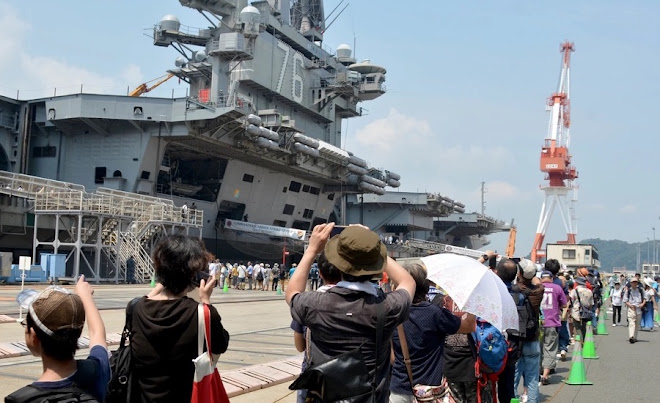Review by Bill Doughty––
Among the unexpected joys of reading “Mastering the Art of Command: Admiral Chester W. Nimitz and Victory in the Pacific” by Trent Hone (Naval Institute Press, 2022) is imagining the great leader as an artist.
Which art is the real surprise.
In “Mastering the Art” Hone examines the Pacific war years (1941-45) and presents the people, operations, and challenges Nimitz confronted.
Most fascinating is Nimitz’s relationship with egotists Admiral “Bull” Halsey and General Douglas MacArthur –– interactions rife with tension and friction. Hone also delves into the complicated leadership dynamics between Nimitz at Pearl Harbor and Admiral Ernest J. King and the joint chiefs in Washington D.C. And, we see his smooth connection with Admirals Raymond A. Spruance, Thomas C. Kinkaid, Marc A. Mitscher, and Charles A. Lockwood.
Whenever possible, Nimitz surrounded himself with people he trusted and who, like him, believed in the relentless and aggressive pursuit of perfection in planning, equipping, and understanding circumstances in order to act, react, and adapt as circumstances changed.
Through Hone’s narrative and in tables and maps, he portrays Operations Galvanic, Flintlock, Granite, Hotfoot, Causeway, Detachment, and Iceberg, among others.
“During those operations, Nimitz displayed inspirational leadership that created opportunities for his subordinates to excel. He delegated extensively, but when major decisions called for his authority or expertise, he took in the best advice available and acted decisively. With responsibility resting on his shoulders, he then invited his subordinates to cocreate positive outcomes through dialogue and conversation. Leadership for Nimitz was not a position of authority but an ‘emergent, interactive dynamic’ that created new possibilities.”
 |
| Nimitz inspects Midway Atoll, March 1942. (NHHC) |
The author’s brilliant writing is at its best in chapter 4, “Seizing the Opportunity.” We feel the precariousness of defending Guadalcanal and how Nimitz handled leadership challenges on both ends of the Pacific –– with Adm. Robert A. Theobald in the Northeast and Adm. Robert L. Ghormley in the South. Fortunately, he had leaders he could count on in Adm. John S. McCain, Alexander A. Vandegrift, and Richmond Kelly Turner.
Nimitz balanced three flows: information, logistics, and combat forces. He achieved balance with three tenets: collaboration, trust, and unity. Hone shows how Nimitz capitalized on his interpersonal skills, judge of character, and lessons learned over decades, including in the early months of the war.
“After Midway, Nimitz and his staff built on a learning system developed in the interwar period,” Hone writes. That insight made me glad I recently read about the legacy of Adm. Joseph Reeves in “All the Factors of Victory: Adm. Joseph Mason Reeves and the Origins of Carrier Airpower” by Thomas Wildenberg, also from Naval Institute Press (see our previous Navy Reads post). Nimitz capitalized on the innovations in carrier aviation developed by Reeves and others. He also embraced amphibious warfare, joint operations, and –– thanks to his own experience ––submarine power.
“By the end of September (1944), Nimitz’s command was like a coiled spring, ready to release its new and increasingly capable potential against Japanese defenses in the central Pacific.”
Hone concludes that Nimitz was indispensable to victory by America and its Allies in the Pacific in under four years of intense action.
“We must acknowledge how the core characteristics of Nimitz’s command structure were essential to victory. Without Nimitz’s sense making capabilities, relentless pursuit of options, and sustained operational tempo, the war in the Pacific would have been quite different. The offensive that flowed across the Pacific, neutralized enemy strongpoints, and brought the war to the shores of Japan was a result of Nimitz’s command structure.”
A highlight and insight into Nimitz’s character appears in Chapter 10, “Achieving Victory,” in which Hone presents the admiral’s message to his command in August 1945 when it was clear that Japan would surrender after King told Nimitz to cease attack operations. Nimitz directed officers of the Pacific Fleet to “take steps to require of all personnel under their command a high standard of conduct” ––“dignity and decorum.” “Neither familiarity and open forgiveness nor abuse and vituperation should be permitted.” He rejected the concept of “us and them.”
And in that vein Hone introduces us to Nimitz the artist.
Admiral Nimitz embraced collective action, effective collaboration, and rapid learning. He always kept the flow moving in synergistic rhythm by modifying and adapting –– in other words “riffing.”
As a leader, he harmonized, sometimes took the lead, and whenever possible let others solo.
His art? Jazz!
––––––––––––––––––––––––––
“In ‘Learning War,’ Trent Hone described the elements of success for the Navy as a complex learning system before and during WWII. In ‘Mastering the Art of Command,’ he focuses on Admiral Nimitz himself and the leadership qualities he demonstrated to achieve the Navy’s learning potential and win the war in the Pacific. Together, these two books are a master class in leading complex learning systems, and should be required reading for every aspiring leader.” —Adm. John Richardson, USN (Ret.), 31st Chief of Naval Operations























